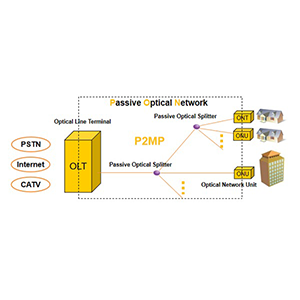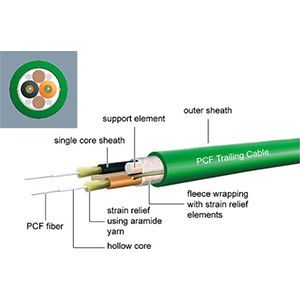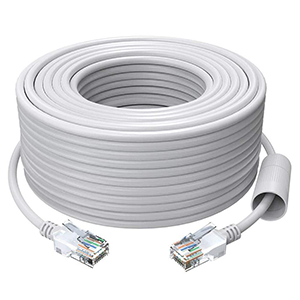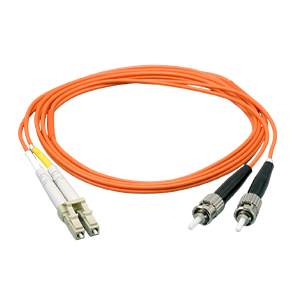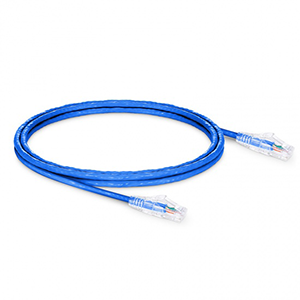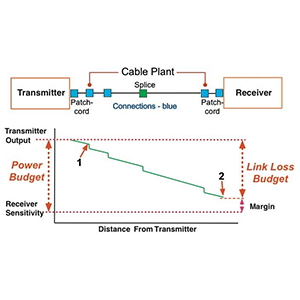Hello everyone! FTTH network is the mainstream technology in the field of optical access, in which ONT equipment plays an indispensable role on the user side. As an important part of the FTTH network, ONT is not only responsible for realizing fiber-to-the-home terminal connections, but also plays a key role in supporting high-bandwidth services and improving user experience.
Today I am very happy to provide you with an in-depth analysis of the technical characteristics of ONT and its important position in the FTTH network. I hope to help you fully understand the advantages of ONT equipment and provide valuable reference for your future FTTH network construction. If you want to learn more about how to select and deploy OLT and ONT, please refer to the article olt and ont: The best comprehensive guide for beginners
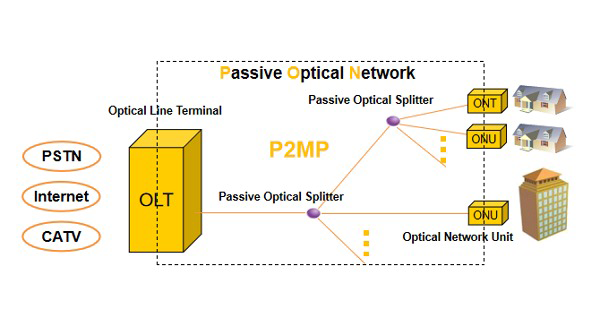
What is ONT
Let me give you an overview of ONT (Optical Network Terminal) technology:
Basic functions and features of ONT:
- ONT is the terminal equipment in the FTTH (Fiber To The Home) optical fiber access network.
- The main functions include: converting optical signals into electrical signals and providing users with a variety of business interfaces.
- Typical features include: integrating multiple interface types, supporting business quality assurance, and having remote management capabilities, etc.
- It is the key terminal equipment connecting the core network and the user side in the FTTH network.
The position and importance of ONT in FTTH network:
- ONT is located at the client end of the FTTH network, connecting the OLT (Optical Line Terminal) and user equipment.
- ONT is responsible for transmitting the services provided by the network to the user side, and is a key link in realizing “fiber to the home”.
- The performance and functions of ONT directly affect the service quality and experience that user terminal equipment can obtain.
- ONT is the key foundation for FTTH networks to provide users with high-speed broadband access services.
The development history and application status of ONT technology:
- ONT technology continues to develop with the continuous updating of PON (Passive Optical Network) standards.
- From the early single-port APON ONT to today’s multi-service integrated GPON/XGS-PON ONT.
- Various types of PON standard ONT equipment have been widely used in FTTH network deployment worldwide.
- ONT functions are constantly enriched, such as supporting Wi-Fi, VoIP, etc., to meet the diverse needs of users.
- ONT is an indispensable terminal device in FTTH networks, and its technological progress has a profound impact on user experience.
In general, ONT is in a key position on the user side in the FTTH network architecture and assumes the core responsibility of transmitting network services to user equipment. The continuous innovation of ONT technology is crucial to improving the overall user experience of FTTH networks.
What are the main features of ONT
Let me introduce to you the main features of ONT (Optical Network Terminal):
ONT hardware structure and software functions:
- The hardware part includes: optical transceiver module, network interface module, system control module, etc.
- Software functions include: PON protocol stack implementation, business processing engine, user management platform, etc.
- The collaborative work of hardware and software enables ONT to achieve core functions such as photoelectric conversion, service carrying, and user access.
Technical advantages of ONT in terms of interface type, service bearing, etc.:
- Supports a variety of network interfaces, such as Ethernet, POTS, CATV, etc., to meet the diverse needs of users.
- Provides high-bandwidth Ethernet interfaces and supports Gigabit and higher-speed access services.
- Have a complete service quality assurance mechanism to ensure the performance and experience of key services.
- Integrated advanced PON management protocol to achieve efficient collaboration with OLT.
ONT key performance indicators and their impact on user experience:
- Single-port optical power budget: determines the transmission distance and service bandwidth capabilities of the ONT.
- Ethernet interface performance: affects the uplink and downlink rates obtained by user terminal equipment.
- Service quality assurance level: reflects the ONT’s ability to support voice, video and other services.
- These indicators directly determine the actual user experience in the FTTH network.
Therefore, as the user-side terminal equipment of the FTTH network, the comprehensiveness of ONT’s hardware and software directly determines the service quality and user experience that end users can obtain. ONT’s advantages in interface type, service carrying, etc. make it a key link between user needs and FTTH networks.
What is the role of ONT in FTTH network
Let me introduce to you the key role ONT (Optical Network Terminal) plays in the FTTH (Fiber To The Home) optical fiber access network:
The key role of ONT in realizing fiber-to-the-home terminals:
- As the user-side terminal equipment in the FTTH network, ONT undertakes the key task of delivering optical fiber network services to user homes.
- ONT connects the high-speed broadband services provided by OLT (Optical Line Terminal) to various user terminal devices through photoelectric conversion and various network interfaces.
- The deployment of ONT is the last mile for FTTH network to achieve “fiber to the home” and is a key link between the network and users.
The importance of ONT in supporting high-bandwidth services and multi-terminal access:
- ONT provides high-speed Ethernet interfaces and can support gigabit and higher speed broadband service bearings.
- ONT integrates a variety of interface types, such as POTS, CATV, etc., to meet users’ access needs for various terminal devices.
- ONT has a complete service quality assurance mechanism to ensure the stable performance of key services such as voice and video.
- These characteristics enable ONT to effectively support the evolution of FTTH networks to the Gigabit era and meet users’ needs for multi-terminal access.
The value of ONT in enhancing user experience and improving network service quality:
- The excellent performance of ONT ensures that users can obtain high-speed and stable broadband service experience.
- ONT’s rich interface types provide users with flexible and convenient home information applications.
- ONT remote management function helps operators improve network operation and maintenance efficiency and shorten fault response time.
- These features are ultimately reflected in bringing users an excellent full-service experience and improving the overall service quality of the FTTH network.
From the above we can easily see that ONT plays an indispensable and important role in the FTTH network. ONT provides key terminal connections for realizing “fiber to the home” and also creates favorable conditions for high-bandwidth applications and multi-terminal integration. The continuous advancement of ONT technology is of great significance to improving the user experience and service quality of FTTH networks.
How to correctly select and deploy ONT
Let me introduce to you the selection and deployment methods and precautions for ONT (Optical Network Terminal):
Main considerations and precautions for ONT selection:
- Business requirements: Reasonably select the interface type and bandwidth capabilities of the ONT based on user needs.
- Network compatibility: Ensure the compatibility of technical standards between ONT and OLT, ODN and other equipment.
- Operation and maintenance costs: Consider the overall economics of the ONT based on installation, configuration, management and other factors.
- Upgrade potential: Reserve room for future ONT function expansion and software and hardware upgrades.
Key steps in ONT deployment and issues that need attention:
- Installation and deployment: Reasonably determine the installation location and method of ONT according to the user environment.
- Initial configuration: Complete the initial configuration of ONT remotely through OLT or manually.
- Business activation: Ensure normal interconnection between ONT and user equipment, and activate various business access.
- Acceptance test: Comprehensively test various performance indicators of the ONT to ensure compliance with requirements.
- Precautions include: avoiding optical power exceeding the limit, preventing equipment from being damaged, etc.
Remote management, fault diagnosis and upgrade strategies for ONT equipment:
- Remote management: Use the OLT’s network management system to centrally monitor and configure the ONT.
- Fault diagnosis: Quickly locate the problem through ONT status information and fault logs.
- Software and hardware upgrade: Dynamically upgrade ONT functions and performance parameters according to business needs.
- Upgrade strategies include: batch upgrade, automatic upgrade, etc. to ensure that the upgrade process is stable and reliable.
In summary, the selection and deployment of ONTs need to comprehensively consider factors such as user needs, network compatibility, and operation and maintenance costs. During the deployment process, attention should be paid to key issues such as optical power and installation location. At the same time, through effective remote management, fault diagnosis and upgrade methods, we ensure that ONT can continue to provide users with a high-quality network experience.
Summary
As the user-side terminal equipment of the FTTH network, ONT not only implements optical fiber to the home, but also undertakes the core task of providing users with high-speed and high-quality access services. Its rich interface types, strong business carrying capacity, and key role in improving user experience all indicate the important position of ONT in FTTH networks. If you want to learn more about the roles of OLT and ONT in FTTH networks, please refer to the article olt vs ont: Comparison Guide to the Best Differences in 2024
With the continuous innovation of FTTH technology, ONT equipment will continue to be upgraded, bringing more excellent optical access services to users. We provide professional ONT products and FTTH network planning services, and have an experienced technical team to provide you with considerate guidance at any time. If you have any needs during the construction and maintenance of FTTH network, please feel free to contact us for communication.
Optical Network Terminal FAQ
An ONT (Optical Network Terminal) is the customer-premises equipment in a passive optical network (PON) that connects the fiber optic network to the end-user’s devices, such as routers, computers, or telephones.
The ONT’s primary role is to convert the optical signals from the fiber to electrical signals that can be used by the customer’s equipment, and vice versa for upstream traffic.
ONTs usually offer Ethernet, Wi-Fi, and telephony interfaces to connect end-user devices, and may also include features like voice over IP (VoIP) and video services.
ONTs and OLTs use standardized protocols, such as GPON or XGS-PON, to establish and maintain the optical link and exchange data and control information.
ONTs may be provisioned and configured either by the service provider or the end-user, depending on the deployment model and service provider’s policies.
ONTs are designed to operate with specific optical wavelengths, power levels, and signaling protocols defined by the PON standard they support.
ONTs typically provide Ethernet, Wi-Fi, and other interfaces to seamlessly connect the fiber optic network to the customer’s devices and internal network.
ONTs are designed to be energy-efficient and operate in a variety of environmental conditions, such as temperature, humidity, and physical enclosure requirements.
As bandwidth demands increase, ONTs can be replaced or upgraded to support higher-speed PON standards, such as XGS-PON, to deliver faster services.
Potential challenges include ensuring compatibility with the service provider’s network, managing end-user configurations, and maintaining the optical link quality over the fiber distribution network.

